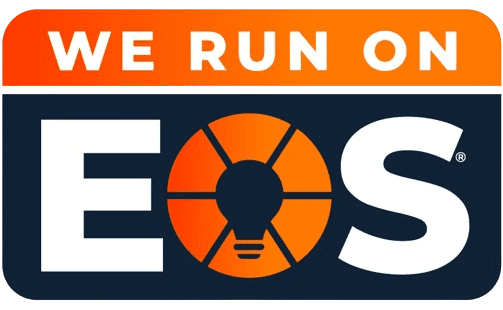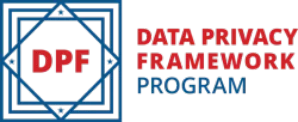A friend of mine was recently looking to fill an open position in his department. After reviewing resumes and conducting interviews, he made a job offer to a candidate, who readily and excitedly accepted. Soon after, the candidate completed all the paperwork and submitted it to the HR department, and all was well. Or so it seemed. A few days before the individual’s start date, HR reached out to the person but heard nothing back. They alerted my friend about this, and he also tried several times to contact the individual. Emails received no reply and phone calls went unanswered, so to no one’s surprise, the person never showed up on their first day.
This was my friend’s first experience with being ghosted by an employee, but he’s not alone. A CareerBuilder and SilkRoad study conducted by The Harris Poll states that around 67% of employers reported nearly a quarter of new hires didn’t show up after accepting a position. And 51% of job seekers reported they’ve looked for other jobs even after an offer has been extended to them and a background check is underway.
There are many reasons why a person might ghost an employer. Indeed’s Ghosting in Hiring Report states that the top reason employers think they are ghosted is because the candidate received another job offer. However, job seekers’ top reported reasons for ghosting are:
- Not the right job for me
- Not the right company for me
- Pay offer wasn’t enough
- Benefits weren’t good enough
- Received another job offer
Notice that “received another job offer” is at the bottom of the list. How can employers create onboarding processes that minimize the chance of employee ghosting? It starts before even making the job offer.
Set the Stage: Be transparent about the position, salary, benefits, and culture.
The top four reasons listed above represent a disconnect between the realities of the position and company and the expectations of the job candidate. The job ad and interview process give employers an important opportunity to both educate candidates about the job and organization as well as uncover areas that might be problematic for applicants and potentially cause them to ghost the employer.
Ensure your job postings paint a realistic picture about the demands of the position and the skills or experience needed to be successful in the role. Also, be as specific as possible regarding salary and benefits. It’s understandable to think that listing a salary range can limit your applicant pool. Yet, not giving candidates an accurate sense of what they can expect in terms of pay can increase the risk that they may experience frustration at putting in the effort of applying and interviewing for a job that ultimately may not meet their salary expectations. This irritation can cause them to mentally move on from the job, sometimes without telling the employer.
Use a behavioral assessment to uncover candidates’ natural traits, strengths, and challenge areas to make interviews more productive. During interviews, ask job candidates to give specific examples of how they’ve demonstrated the knowledge and skills needed for the job. Also, encourage an open dialogue and ask candidates up front about concerns they may have regarding the position or company so you can address any potential issues early on.
Set the Standard: Don’t ghost your job candidates.
Many job seekers and employees feel that it’s acceptable to ghost employers because employers have ghosted them. Break that cycle by making the commitment to communicate with candidates throughout the hiring process so they know where they stand.
Automate your process to send emails to applicants letting them know that the job has been filled but that you appreciate their time. Go the extra mile and individually call the candidates you’ve interviewed to let them know when you’ve selected someone else for the job but that you will keep them in mind for future positions they might be well suited for in your business. These simple gestures can help to set your company apart from others in a competitive job market. Plus, it’s just good business.
You’ve made the job offer and the candidate has accepted. Now is the time for your onboarding process to shine so the new employee is excited about working at your organization and the thought of ghosting your company is the last thing on their mind.
1. Preboarding
Onboarding doesn’t begin on the first day; it starts the moment the candidate accepts the offer. This preboarding phase is crucial for setting expectations and keeping the lines of communication open. By establishing a strong connection early, new hires are more likely to feel valued and committed to their decision.
- Provide Resources: Share a digital welcome kit that includes the company’s mission, values, and an overview of the employee’s first-week schedule. Offering resources upfront can alleviate any anxiety about what lies ahead.
- Maintain Engagement: Send a congratulatory email from the manager or team leader when the candidate accepts the offer. Additionally, a quick call or email from the hiring manager closer to the start date can reiterate the company’s excitement and address any lingering questions.
2. Clear Communication
Some first-day no-shows occur because new hires feel uncertain or disconnected. Combat this by creating a clear and transparent communication channel. Clarity and accessibility can turn anxiety into anticipation.
- Detailed First-Day Instructions: Clearly outline when and where they need to report, who they’ll meet, and what they need to bring. Include parking instructions or virtual meeting links for remote employees.
- Buddy System: Assign a peer mentor or “buddy” to answer questions and serve as a friendly point of contact before the first day.
3. Cultivate An Emotional Connection and Cultural Fit
A key factor in first-day ghosting can be the lack of an emotional attachment to the organization. Building this connection requires fostering a sense of purpose and belonging.
- Values and Mission: Incorporate storytelling into your onboarding to highlight the company’s mission, values, and impact. When employees see alignment with their own beliefs, they’re more likely to stay committed.
- Celebrate the Hire: Share an announcement on internal communication channels to welcome the new employee and generate excitement among their colleagues.
4. Create a Structured Onboarding Plan
A chaotic or disorganized onboarding experience can make a new employee feel unimportant, contributing to disengagement and the potential for ghosting. Prevent this by developing a structured and engaging onboarding plan that extends beyond the first day. A well-organized onboarding plan reflects the company’s professionalism and demonstrates that the new hire’s success matters.
- Role Clarity: Clearly define the employee’s responsibilities and goals during their first week, ensuring they understand how their work contributes to the organization’s success.
- Interactive Sessions: Include hands-on training and interactive activities to make the process engaging. For instance, host a scavenger hunt for new hires to familiarize them with the office or software tools
- Checkpoints for Feedback: Create opportunities for new employees to share their thoughts on their onboarding experience. Use surveys or one-on-one meetings to adjust as needed.
5. Offer Support and Flexibility
Life happens. Personal emergencies or last-minute jitters can lead to ghosting. A little flexibility and understanding can help mitigate these situations. This approach demonstrates empathy and can transform a potential no-show into a loyal employee.
- Proactive Check-Ins: Send a friendly reminder message the evening before the first day, offering a chance to address any last-minute concerns.
- Safety Net: Create a culture where employees feel comfortable reaching out if they need to delay their start or request assistance.
My friend never solved the mystery of why the employee didn’t show up. Most employers probably don’t. But a ghosting experience drives home the importance of treating onboarding as a pivotal component in the employee lifecycle. By investing time and effort into creating a welcoming, organized, and emotionally resonant onboarding experience, organizations can turn new hires into engaged team members who are excited to contribute from day one.
The Omnia Group wants to help you hire the right fit for the right job every time. Contact us today to learn how The Omnia Assessment can give you the data-driven insights to elevate your hiring and onboarding processes.























